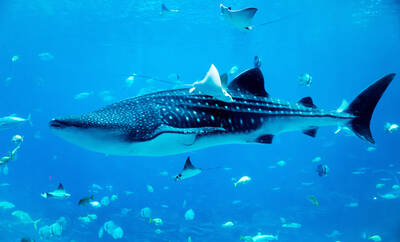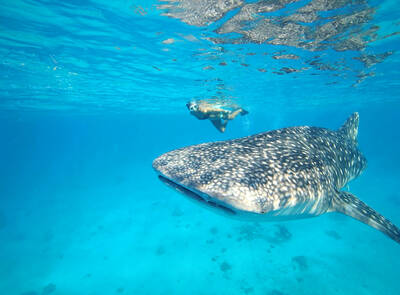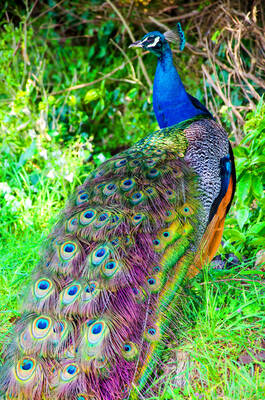The Akashi Kaikyo Bridge in Japan is the world’s longest suspension bridge. It spans a waterway four kilometers wide and is designed to withstand powerful typhoons, tsunami and earthquakes. It is the pinnacle of bridge engineering. The Akashi Bridge owes its success to seven key inventions, found in seven landmark bridges. At the heart of each bridge lies a major technological innovation that allowed engineers to span ever wider chasms. One by one, travelling up the scale, we’ll reveal the incredible stories behind these structures and the inventions that allowed them to grow ever longer.
日本明石海峽大橋是全球最長的吊橋。它橫跨四公里寬的水路,經得起強烈颱風、海嘯和地震的侵襲,是橋樑工程學的巔峰之作。明石海峽大橋的成功,有賴於出現在七座橋樑地標裡的七大發明。每一座橋的核心,都是一項科技的重大創新,讓工程師能橫跨越來越寬的鴻溝。隨著一條條規模日增的橋樑,我們將揭露這些結構背後的精彩故事,以及使它們越蓋越長的發明。
Seven ingenious leaps forward enabled bridges to evolve from big to bigger, into the world’s biggest. The Akashi Straits in Japan is one of the world’s busiest waterways. It links Kobe on the mainland with Japan’s densely populated outer islands. To create a bridge long enough and strong enough to span this gap, the Japanese pushed technology to its limits. To understand how the Akashi Bridge got to be this long, we need to wind back in time and scale to look at how bridge design evolved. Our journey begins in eighteenth century England with a bridge just 30m long, built from a new wonder material.
匠心獨運的七大躍進,促成了橋樑的演化,大橋的規模更上一層樓,終於成就世界第一大橋。日本明石海峽是全球最繁忙的水路之一,連接日本本土的神戶和人口密集的離島。為了打造一座長度和強度都能跨越這條鴻溝的橋樑,日本人發揮了科技的最極限。要了解明石大橋怎麼能蓋那麼長,就得從時間和規模上來追溯,看看橋樑的設計如何演進。我們的旅程始於十八世紀的英國,一座長度僅三十公尺、採用全新神奇建材的橋樑。
In 1779, the industrial revolution is in the midst of transforming England, but here in rural Shropshire the physical barrier of this river halts its progress. The ferry just couldn’t cope with the explosion in traffic of people and goods. The river is only 30m across but this was a critical distance for the bridge builders of the time. The conventional way of spanning such a river was to build a stone arch, a method used since Roman times. But 30m is about the limit this type of bridge can straddle. To make a stone arch wider, it must also be made higher to preserve the semicircular shape that provides its strength. But enlarging the arch comes at a cost. To double its size, the bridge builder must use eight times the amount of stone. But the arch cannot bear this extra load and the bridge collapses under its own weight.
一七七九年,工業革命正使英國改頭換面,不過在士洛普郡的農村,這條河的屏障阻礙本地進步。但渡輪不足以應付暴增的人貨運輸。這條河只有三十公尺寬,對當時的造橋者而言,卻是關鍵性的距離。跨越這樣一條河的傳統方式,是建造一座石拱橋,這個方法始於羅馬時代,但對這類橋樑而言,三十公尺幾乎就是極限。為了把石拱加寬,橋樑必須同時增高,以保存橋樑強度之所繫的半圓形。但擴大橋拱的代價不菲,要把橋拱尺寸加倍,造橋者必須使用八倍的石材。但橋拱無法承受額外的荷載,橋樑會被自己給壓垮。
A promising material is already being used at the time to make small objects like kitchen utensils. It’s formed by heating iron ore until it turns into a liquid. The result is a magical material called cast iron. But at the time, cast iron was unsuitable for bridge building. The coke that fuels the furnaces contains impurities that make the iron too brittle. Then, at an iron foundry in the county of Shropshire, workers discover that the local coke is wonderfully pure. This produces an iron as strong as it is versatile. And this is exactly what the foundry does to advertise the quality of its high-grade cast iron. In 1779 they set about building the world’s first cast iron bridge. It’s constructed from 1,700 pre-cast sections of iron. Five semicircular ribs form the bridge’s 30m-long central arch. Because the structure is comprised of an iron lattice work rather than solid stone, the bridge weighs in at just 380 tons. They name it Iron Bridge. Surprisingly it has the look of something made from wood.
當時已使用一種頗具潛力的材料來製造廚房用具等小玩意兒。作法是把鐵礦加熱成液體,製造出來的神奇材料叫做鑄鐵。但當時的鑄鐵還不適合造橋。送進火爐的焦炭含有雜質,燒出的鐵脆弱易碎。後來在士洛普郡一家鑄造廠,工人發現當地的焦炭品質純粹,鍛鍊出的鐵強度夠、用途廣,這家鑄造廠果然藉此宣傳自家生產的高級鑄鐵品質優良。一七七九年,他們著手興建全球第一座鑄鐵橋,以一千七百件預鑄鐵組件建造,五條半圓形拱肋構成橋樑三十公尺長的中央橋拱。由於橋體是以鐵格而非實心石塊組成,橋樑僅重三百八十噸,命名為「鐵橋」。令人驚訝的是,它竟有木橋的風貌。

The third-hottest July worldwide ended a string of record-breaking temperatures last month, but many regions were still devastated by extreme weather amplified by global warming, the European climate monitoring service said Thursday last week. Heavy rains flooded Pakistan and northern China; Canada, Scotland and Greece struggled to tame wildfires intensified by persistent drought; and many nations in Asia and Scandinavia recorded new average highs for the month. “Two years after the hottest July on record, the recent streak of global temperature records is over,” Carlo Buontempo, director of the EU’s Copernicus Climate Change Service, said in a statement. “But that

Whale sharks are the largest species of fish in the world. They aren’t related to whales, but take their name due to their enormous size. At full maturity, whale sharks measure around nine or 10 meters long and can weigh from 15,000 to 40,000 kilograms. Whale sharks live in warm waters, with about 75% of them found in the Indo-Pacific region. They can migrate thousands of kilometers to different feeding grounds, but at a slow speed of 5 km/h on average. Whale sharks have a broad, flat head and are typically brown or gray in color. Their distinguishing characteristic

Continued from yesterday(延續自昨日) https://www.taipeitimes.com/News/lang Whale shark reproduction has long been a mystery for scientists. However, a significant discovery in 1995 off the eastern coast of Taiwan provided valuable insights. Researchers examined a pregnant female of the species and found over 300 embryos inside her body, ranging from about 40 to 60 cm in length. This discovery revealed that whale sharks are ovoviviparous. Instead of laying eggs in the ocean, the mother carries them internally until they hatch, giving birth to fully developed live young. Since the eggs don’t hatch all at once, embryos at different stages of development can all exist within

Peacocks are among the most beautiful birds in the world. Their bright feathers and graceful movements have fascinated humans for centuries. These magnificent creatures belong to the pheasant family and are found in regions across Asia and Africa. Let’s explore peacocks’ unique characteristics and cultural significance. There are three main species of peacock: the well-known Indian peafowl, native to South Asia; the endangered green peafowl from Southeast Asia; and the rare Congo peafowl, found in African rainforests. Although the term “peacock” technically refers only to males, many people use it for both sexes. Male peacocks display their colorful tail feathers, which